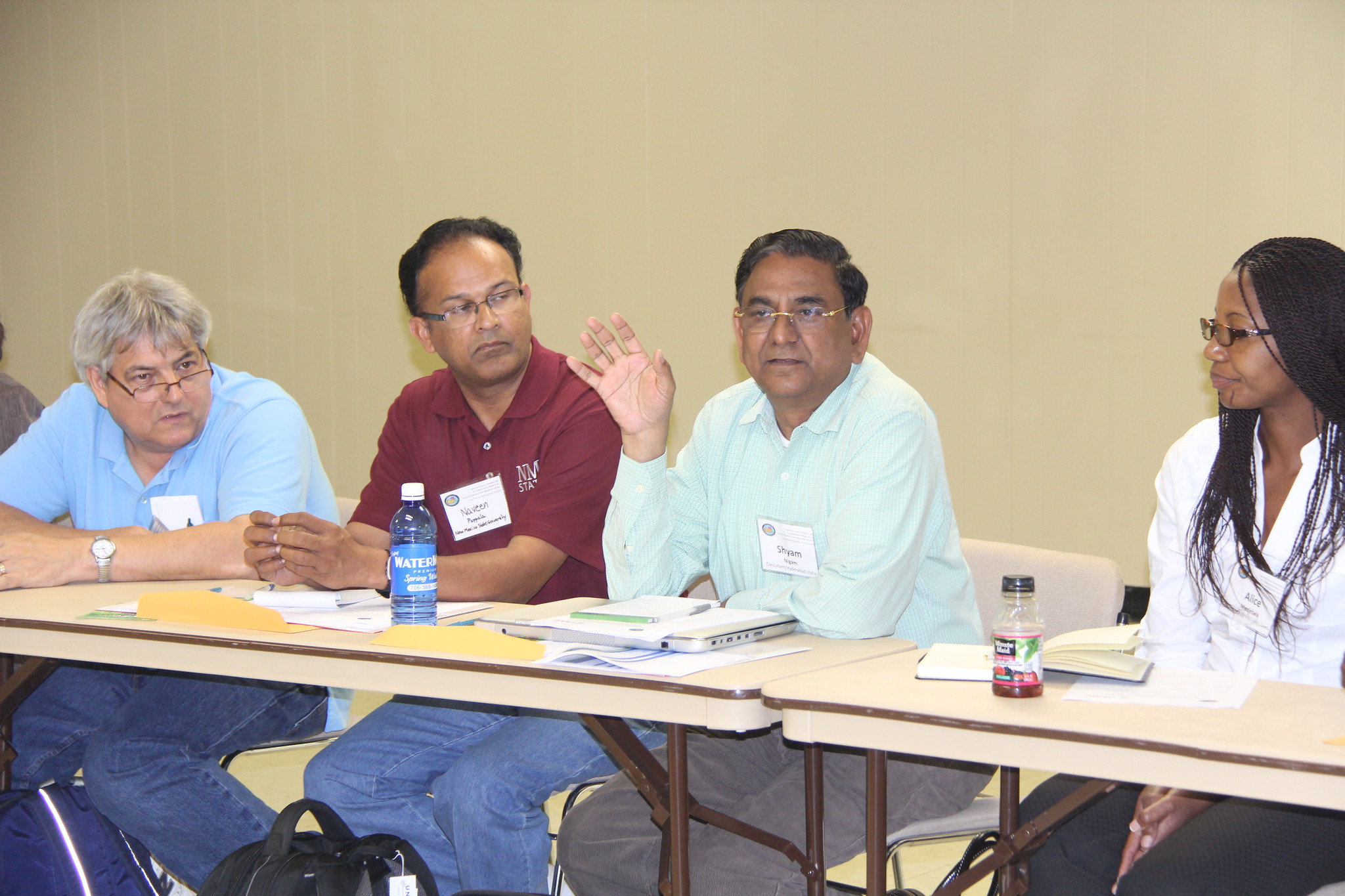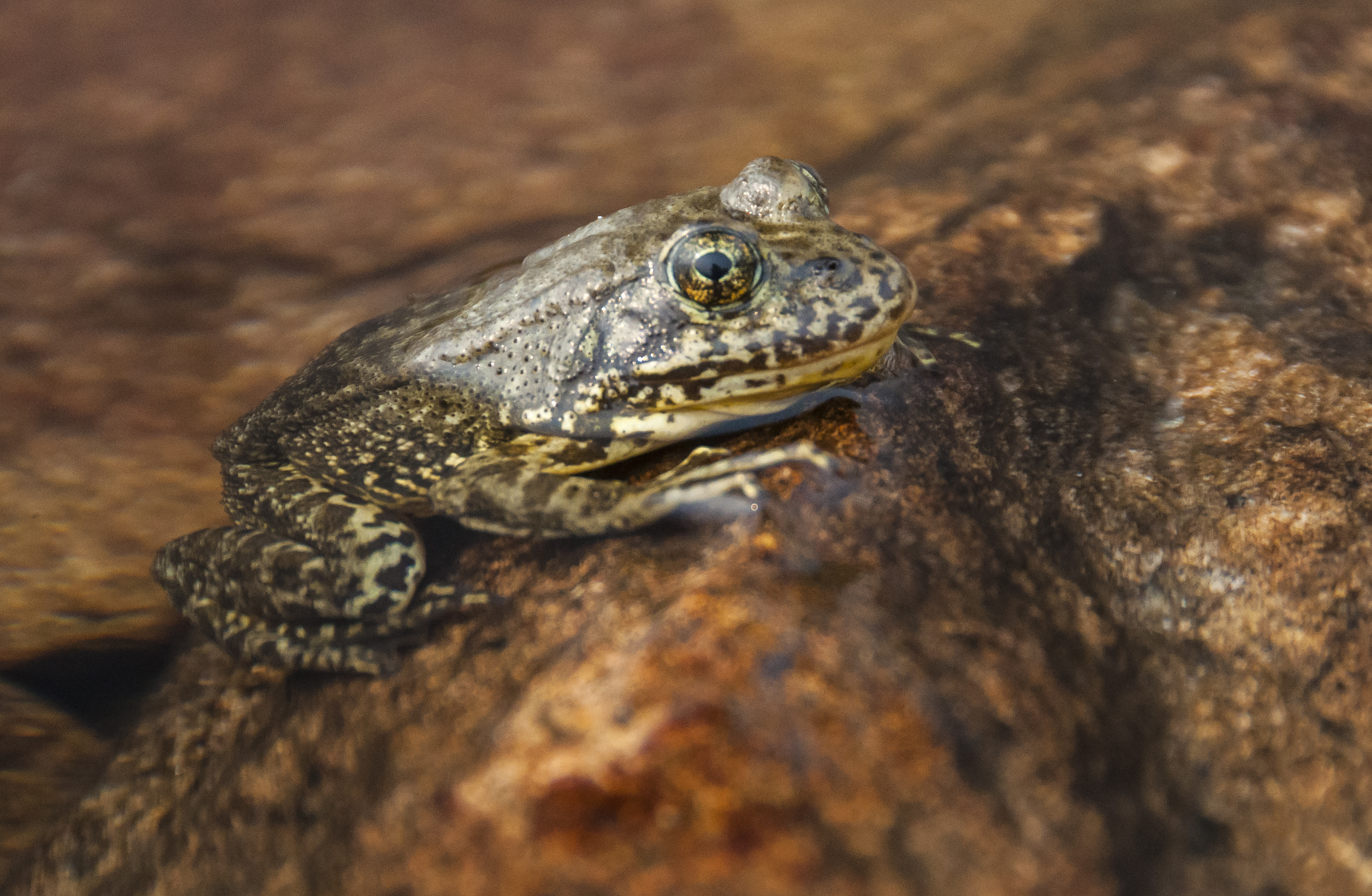2.2: Science is a Social Process
( \newcommand{\kernel}{\mathrm{null}\,}\)
Science is a Social Process
Scientists must share their findings for other researchers to expand and build upon their discoveries. Communication and collaboration within and between sub disciplines of science are key to the advancement of knowledge in science. For this reason, an important aspect of a scientist’s work is disseminating results and communicating with peers. Scientists share their ideas with peers at conferences, seeking guidance and feedback (figure 2.2.13), but this approach can reach only the limited few who are present.

Figure 2.2.13: Scientists share information by publishing and attending conferences. The conference shown here focuses on peanut and mycotoxin (harmful chemicals produced by fungi) research. Image by Sharon Dowdy (CC-BY-NC).
Peer Review
Most scientists present their results in peer-reviewed articles that are published in scientific journals (figure 2.2.14). Peer-reviewed articles are scientific papers that are reviewed, usually anonymously by a scientist’s colleagues, or peers. These colleagues are qualified individuals, often experts in the same research area, who judge whether or not the scientist’s work is suitable for publication. The process of peer review helps to ensure that the research described in a scientific paper or grant proposal is original, significant, logical, and thorough. Grant proposals, which are requests for research funding, are also subject to peer review. Scientists publish their work so other scientists can reproduce their experiments under similar or different conditions to expand on the findings. The experimental results must be consistent with the findings of other scientists.

Figure 2.2.14: The findings of scientific studies are published in peer-reviewed scientific journals. Image by free svg (public domain).
There are many journals and the popular press that do not use a peer-review system. A large number of online open-access journals, journals with articles available without cost, are now available many of which use rigorous peer-review systems, but some of which do not. Results of any studies published in these forums without peer review are not reliable and should not form the basis for other scientific work. In one exception, journals may allow a researcher to cite a personal communication from another researcher about unpublished results with the cited author’s permission.
The scientific review process aims to weed out misinformation, invalid research results, and wild speculation. Thus, it is slow, cautious, and conservative. Scientists tend to wait until a hypothesis is supported by an overwhelming amount of evidence from many independent researchers before accepting it as a scientific theory.
As you review scientific information, whether in an academic setting or as part of your day-to-day life, it is important to think about the credibility of that information. You might ask yourself: has this scientific information been through the rigorous process of peer review? Are the conclusions based on available data and accepted by the larger scientific community? Scientists are inherently skeptical, especially if conclusions are not supported by evidence (and you should be too).
Building on the Work of Others
Only rarely does a scientific discovery spring full-blown on the scene. When it does, it is likely to create a revolution in the way scientists perceive the world around them and to open up new areas of scientific investigation. Darwin's theory of evolution and Mendel's rules of inheritance are examples of such revolutionary developments. Most science, however, consists of adding another brick to an edifice that has been slowly and painstakingly constructed by prior work.
The development of a new technique often lays the foundation for rapid advances along many different scientific avenues. Just consider the advances in biology that discovery of the light microscope and, later, the electron microscope have made possible. Throughout these pages, there are many examples of experimental procedures. Each was developed to solve a particular problem. However, each was then taken up by workers in other laboratories and applied to their problems.
In a similar way, the creation of a new explanation (hypothesis) in a scientific field often stimulates workers in related fields to reexamine their own field in the light of the new ideas. Darwin's theory of evolution, for example, has had an enormous impact on virtually every subspecialty in biology as well as environmental science. To this very day, scientists in specialties as different as biochemistry and conservation biology are guided in their work by evolutionary theory (figure 2.2.15).

Figure 2.2.15: Understanding the endangered mountain yellow-legged frog through the lens of evolution and genetics has aided its conservation. Image by Iasaac Chellman/NPS (CC-BY).
Structure of Scientific Papers
Scientific papers are usually divided into several sections (not necessarily in this order).
Summary or Abstract: This section includes only the essence of the other sections. It should be as brief as possible, telling the reader what the goal of the experiment was, what was found, and the significance of the findings. The abstract is often placed at the beginning of the paper rather than at its end.
Introduction: This section of the paper describes the scientific question or problem that was the subject of the investigation. The introduction also includes references to earlier reports of these and other scientists that have served as the foundation for the present work. Finally, the introduction states the hypothesis.
Materials and Methods: Here are precisely described the materials used (e.g., strains of organism, source of the reagents) and all the methods followed. The goal of this section is to give all the details necessary for workers in other laboratories to be able to repeat the experiments exactly. When many complex procedures are involved, it is acceptable to refer to earlier papers describing these methods in greater detail.
Results: Here the authors report what happened in their experiments. This report is usually supplemented with graphs, tables, and photographs.
Discussion: Here the authors point out what they think is the significance of their findings. This is the place to show that the results are compatible with certain hypotheses and less compatible, or even incompatible, with others. If the results contradict the results of similar experiments in other laboratories, the discrepancies are noted here, and an attempt may be made to reconcile the differences.
Acknowledgments: In this brief but important section, the authors give credit to those who have assisted them in the work. These usually include technicians (who may have actually performed most of the experiments!) and other scientists who donated materials for the experiments and/or gave advice about them.
References: This section gives a careful listing of all earlier scientific work referred to in the main body of the paper. Most of the references are to other scientific papers. Each reference should provide enough information so that another person can locate the document. This means that each reference should include the name(s) of the author(s), the journal or book in which the report appears, and the year of publication. In the case of scientific journals, the volume number in which the paper appears and the page number on which the paper begins should be included. A digital object identifier (DOI) or url is often included. The full title of the article is often included as well, although some citation styles omit the title from the reference.
References
Institute of Medicine (US) Committee to Review the Health Effects in Vietnam Veterans of Exposure to Herbicides. Veterans and Agent Orange: Health Effects of Herbicides Used in Vietnam. Washington (DC): National Academies Press (US); 1994. 2, History of the Controversy Over the Use of Herbicides.
Neubert, D., Dillmann, I. Embryotoxic effects in mice treated with 2,4,5-trichlorophenoxyacetic acid and 2,3,7,8-tetrachlorodibenzo-p-dioxin. Naunyn-Schmiedeberg's Arch. Pharmacol. 272, 243–264 (1972).
Stellman, J. M., & Stellman, S. D. (2018). Agent Orange During the Vietnam War: The Lingering Issue of Its Civilian and Military Health Impact. American journal of public health, 108(6), 726–728.
Yi, S. W., Ohrr, H., Hong, J. S., & Yi, J. J. (2013). Agent Orange exposure and prevalence of self-reported diseases in Korean Vietnam veterans. Journal of preventive medicine and public health = Yebang Uihakhoe chi, 46(5), 213–225.
American Association for the Advancement of Science (AAAS). 1990. Science for All Americans. AAAS, Washington, DC.
Barnes, B. 1985. About Science. Blackwell Ltd ,London, UK.
Giere, R.N. 2005. Understanding Scientific Reasoning. 5th ed. Wadsworth Publishing, New York, NY.
Kuhn, T.S. 1996. The Structure of Scientific Revolutions. 3rd ed. University of Chicago Press, Chicago, IL.
McCain, G. and E.M. Siegal. 1982. The Game of Science. Holbrook Press Inc., Boston, MA.
Moore, J.A. 1999. Science as a Way of Knowing. Harvard University Press, Boston, MA.
Popper, K. 1979. Objective Knowledge: An Evolutionary Approach. Clarendon Press, Oxford, UK.
Raven, P.H., G.B. Johnson, K.A. Mason, and J. Losos. 2013. Biology. 10th ed. McGraw-Hill, Columbus, OH.
Silver, B.L. 2000. The Ascent of Science. Oxford University Press, Oxford, UK.
Contributors and Attributions
- Modified by Kyle Whittinghill (University of Pittsburgh)
Samantha Fowler (Clayton State University), Rebecca Roush (Sandhills Community College), James Wise (Hampton University). Original content by OpenStax (CC BY 4.0; Access for free at https://cnx.org/contents/b3c1e1d2-83...4-e119a8aafbdd).
- Modified by Melissa Ha
- 1.2: The Process of Science by OpenStax, is licensed CC BY
- What is Science? from An Introduction to Geology by Chris Johnson et al. (licensed under CC-BY-NC-SA)
- The Process of Science from Environmental Biology by Matthew R. Fisher (licensed under CC-BY)
- Scientific Methods from Biology by John W. Kimball (licensed under CC-BY)
- Scientific Papers from Biology by John W. Kimball (CC-BY)
- Environmental Science: A Canadian perspective by Bill Freedman Chapter 2: Science as a Way of Understanding the Natural World


